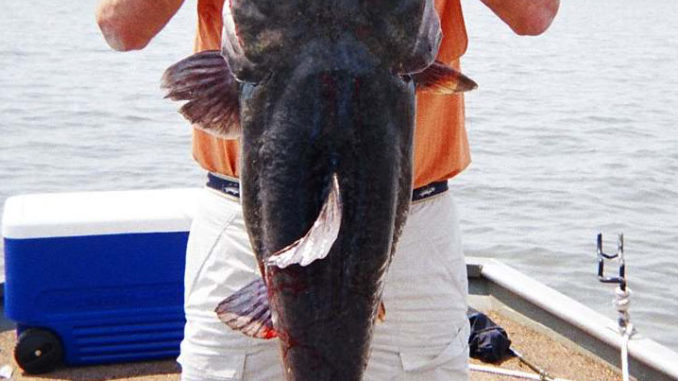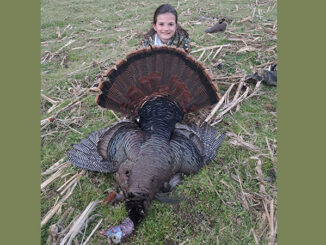
Live bait, heavy tackle is on the menu for these big, bruising catfish
Guide Gus Gustafson said July is a peak month for catching flathead catfish on North Carolina’s Lake Norman.
“I don’t know where the smaller fish are, but any time you catch a flathead at Norman, you’re usually battling a fish weighing 15 pounds or more,” said Gustafson. “Flatheads at Norman weigh up to 60 pounds.”
Gustafson said fishermen should use live bait — bream, white perch or goldfish — if they want to catch flatheads rather than blues or channel cats.
Gustafson (www.fishingwithgus.com) said flatheads rest flat on the lake bottom, peering up, looking for an easy meal.
“One of the best ways to locate flatheads, which can be anywhere in July, is to find a feeding school of white perch,” said Gustafson. “The flatheads shadow the marauding perch and dine upon the scraps of forage (they) leave behind.”
Otherwise, they can be found in 30 feet of water or less on the ends of points, in sloughs, in the backs of creeks and along riprap.
These bulky, whiskered brutes require stout tackle; Gustafson recommending an Ambassadeur reel with a clicker to signal bites. The reel should be spooled with at least 30-pound braided line joined to a Carolina rig featuring a 50-pound leader with a No. 5/0 to 9/0 circle hook at the business end holding live bait.
“The trick to catching flatheads involves keeping the bait just off the bottom,” said Gustafson, who uses an in-line float a foot or so in front of the hook or by turning the reel handle two or three times after the weight of the rig hits the bottom.
Once the fish strikes, no hookset is required with a circle hook; just retrieve the line, and the hook will set itself. The ensuing struggle may last as long as 20 minutes depending upon the size of the fish.
“Flatheads are superstar fighters when they get near the boat,” Gustafson said. ”Don’t try to out-tug the fish, because something will give: usually a rod tip, your line or the gears within the reel.”
Instead, Gustafson employs a pump-and-reel technique to wear the fish out before grasping the fish by hand or slipping it in the net.
If you’ve never seen a flathead, prepare yourself for a scary sight.
“A big flathead looks like a river monster,” Gustafson said. “I had the wife of one client shriek upon eye-balling a flathead. She fell backwards out of the boat and into the lake. We retrieved both the fish and the woman.”




Be the first to comment